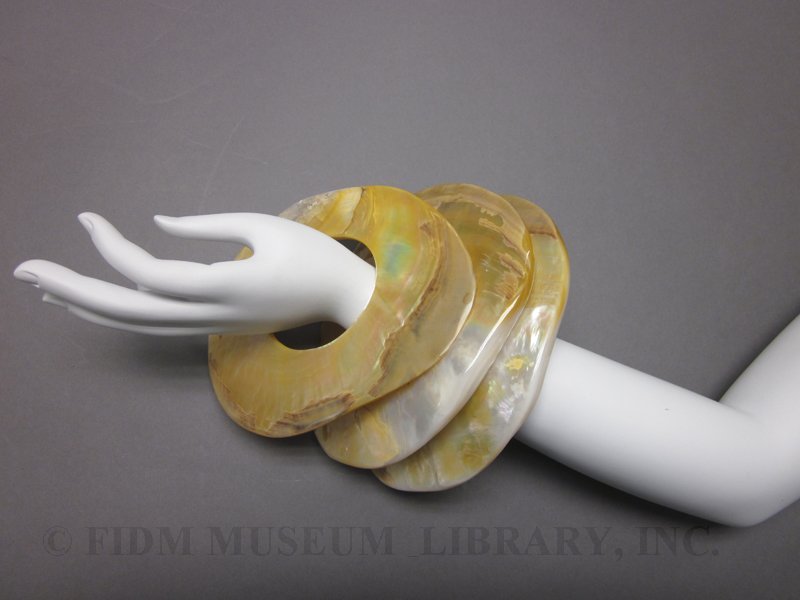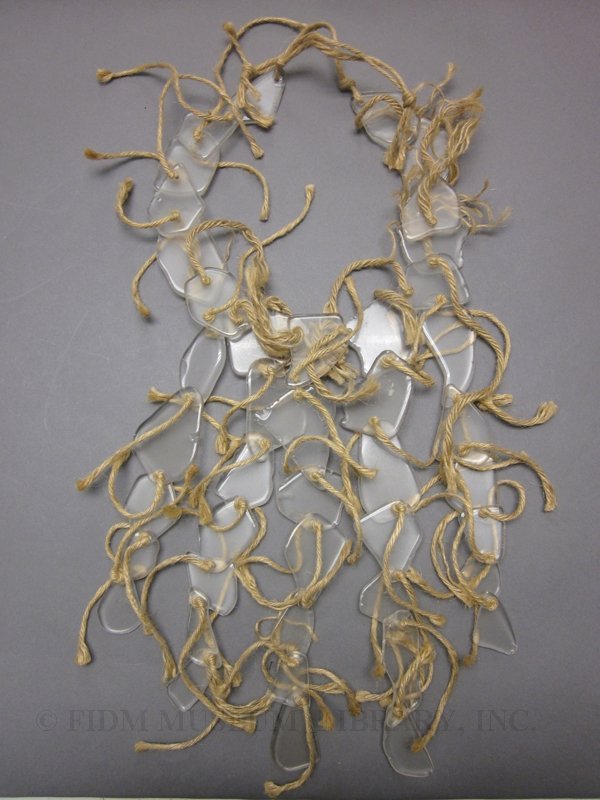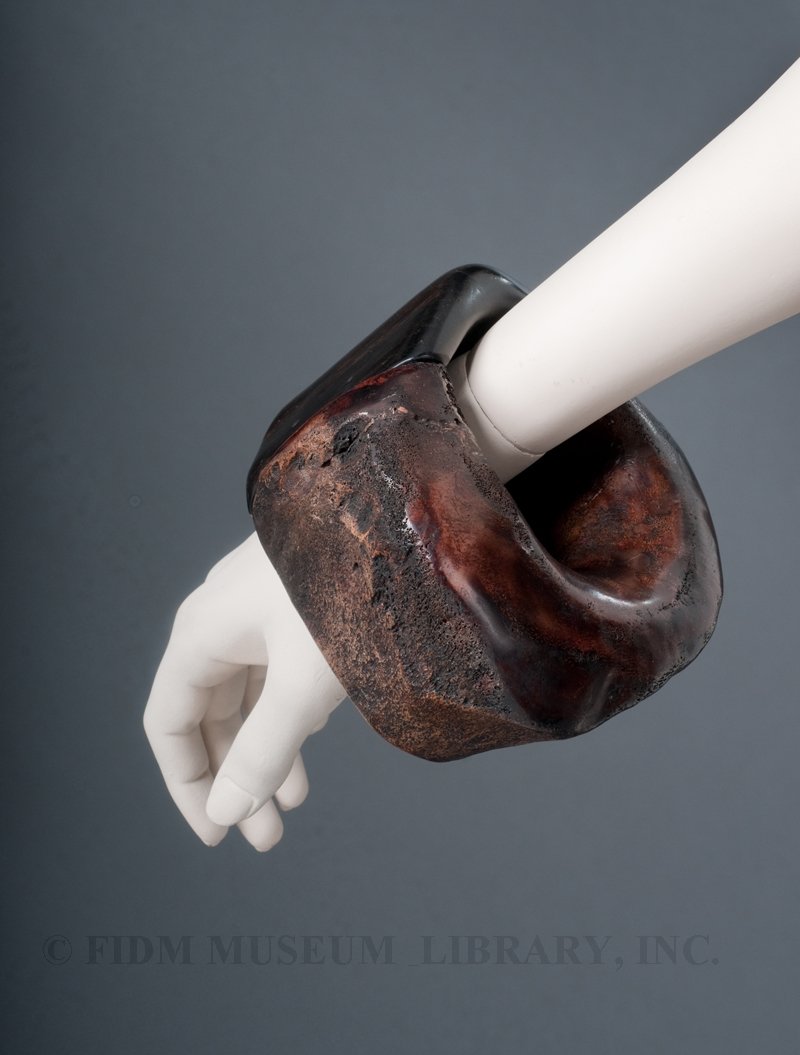Monies jewelry
 Bracelets
Bracelets
Mother of pearl
Monies
1990-2000
Gift of The Muriel Pollia Foundation
2006.868.9A-C
Since the early 1970s, Gerda and Nikolai Monies have used fossils, petrified wood, animal bone, seeds, beach stones, jute and other organic materials to create dramatic, sculptural jewelry. Based in Copenhagen, their eponymous jewelry house produces two collections each year: Production and Unique. Based on seasonal themes, Production is a line of handcrafted multiples, while Unique (as the name suggests) is a collection of one-of-a-kind jewelry. The organic materials that give Monies jewelry its character are globally sourced and then crafted into jewelry that enhances the innate characteristics of each material. The mother of pearl bracelets pictured above show evidence of this philosophy. Though mother of pearl can be polished and tinted to a uniform appearance, each bracelet varies slightly in color, texture and shape. The variations suggest the organic processes that created the mother of pearl while also enhancing their visual appeal

Necklace
Jute and rock crystal
Monies
1990-2000
Gift of the Muriel Pollia Foundation
2006.68.17A
Not for the conservative dresser, Monies jewelry is definitely statement jewelry. Each piece comprises dramatic forms that catch the eye and demand attention. This necklace combines jute cord with irregular shards of polished rock crystal. Approximately 21 inches long, it isn't going to disappear under the collar of your shirt. And it's HEAVY. Because it incorporates dense natural materials, Monies jewelry tends to be remarkably weighty.
It would be fascinating to know more about the inspiration and design process for Monies jewelry. Unfortunately, there's very little information available on the designers or the firm. A blog promoting Copenhagen suggests that Gerda and Nikolai Monies approach each piece of jewelry as if it were a sculpture. It also notes that they've collaborated with fashion designers, including Donna Karan, Christian Lacroix and the house of Chanel. Have you seen evidence of these collaborations? If so, let us know!
This bracelet might be our most impressive piece of Monies jewelry. Any guess as to what it's made from? It actually incorporates two different materials.
 Bracelet
Bracelet
c. 1995
Gift of the Muriel Pollia Foundation
2006.868.12AB
Mammoth bone and ebony! We had this bracelet examined by the staff of the George C. Page Museum at the Rancho La Brea Tar Pits. They informed us that the fossilized bone is actually a femur from an Ice Age mammoth excavated in Siberia. The other portion is ebony, an extremely dense wood, harvested somewhere in West Africa. The two materials were merely shaped, polished and oiled to create a remarkable bracelet.